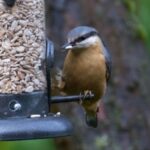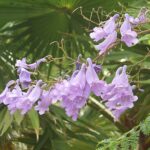Dance of the mayflies . . . or flight of the “fishflies” . . . or “march” of the “Canadian soldiers” . . . or “smoke” of the shadflies: however you like to refer to them and what they do, it was all going on this past weekend!
What about the bugs?
Recently, talking to someone about how much I enjoyed spending time on Great Lake Basin islands, I was asked, “What about the bugs?” Hmmm, exactly what about the bugs do you want to know, I wondered . . .
Islands tend to be more lush with vegetation, more filled with birds, and, yes, given those two facts and a host of others, you should find “bugs” on islands, but they don’t have much to do with island visitors in the way of “bugging” them. For one thing, island breezes often take care of the pesky mosquito, a lovely island asset. And island spiders, when left to their own devices (i.e., not sprayed), take care of many of the other insects on the islands.
A special ephemeral insect
However, this time of year, one insect in the Great Lakes Basin makes an appearance that is often quite spectacular. Mid to late June and into July, a special aquatic insect, the Mayfly—from the order Ephemeroptera, which refers to the ephemeral nature of their life—emerges.
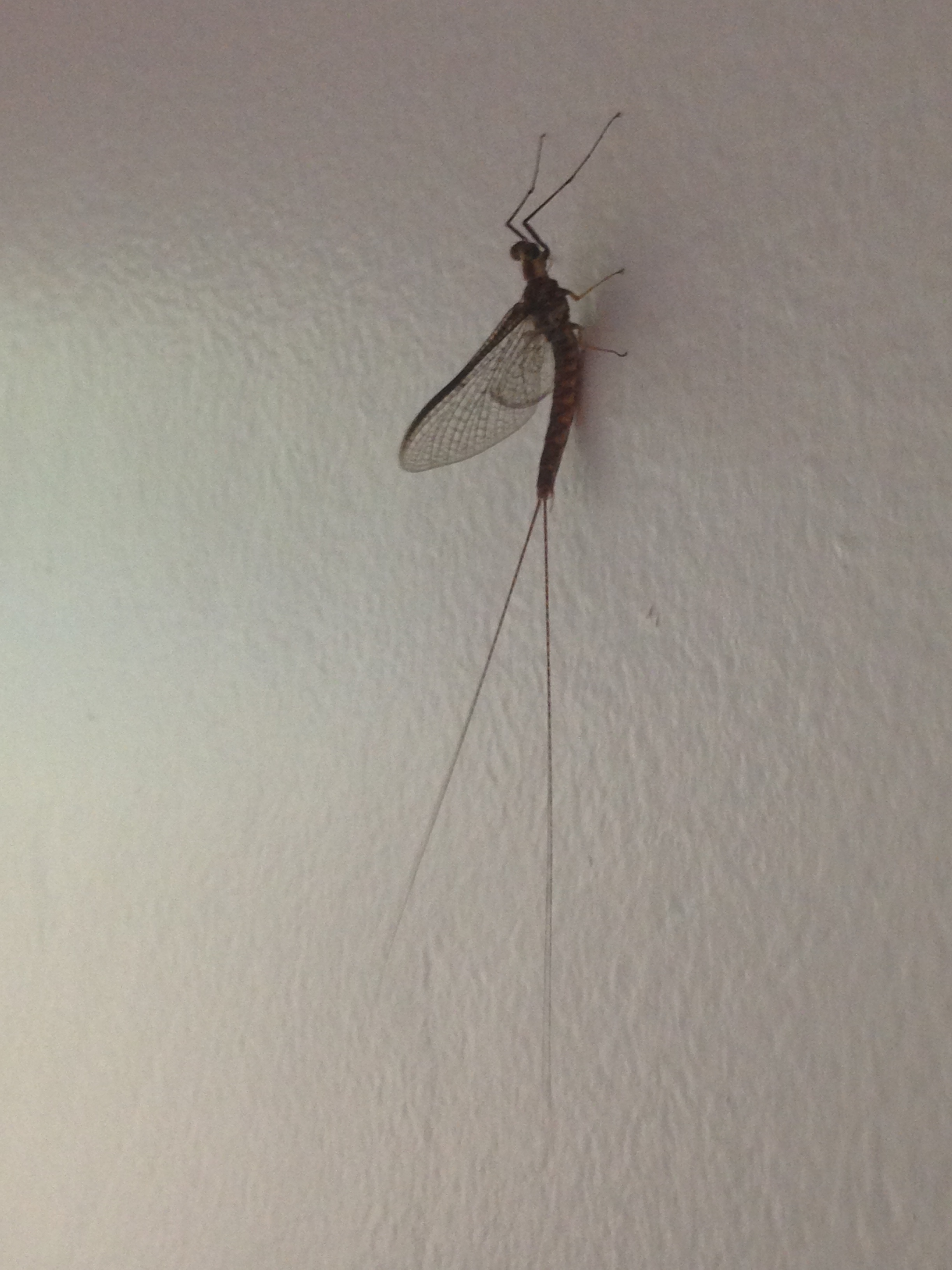
A three-inch-long Burrowing Mayfly (Hexagenia limbata) posing in our Pelee Island cottage.
Think of mayflies as the “daylilies of the insect kingdom,” living for just a day in their flying adult form. And it just so happens that daylilies and mayflies both “bloom” at around the same time.
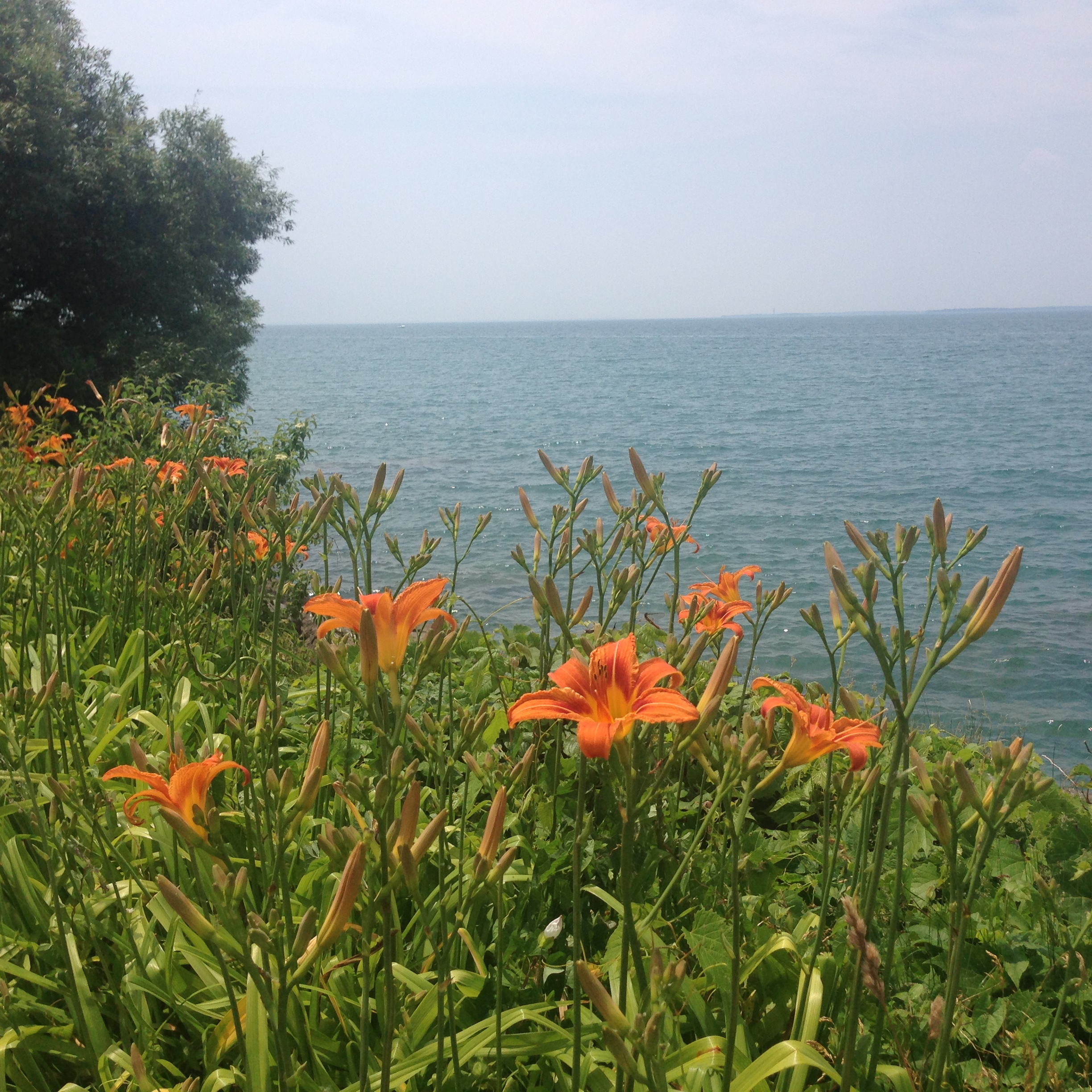
The Common Daylily (Hermerocallis fulva) on Pelee Island’s shore off Lake Erie in late June.
The Mayfly’s aquatic nature
What’s so interesting about the mayfly? For starters, mayflies spend one to two years burrowing at the bottom of the lake (or a river), in depths up to 60 feet, as a naiad (or “nymph,” a mayfly’s name during its larvae stage).
For entomologists, a mayfly is unusual in that it molts twice from naiad (or “nymph”) to subimago (or “dun”) and finally, to imago (or “spinner”). (Click here to see a photographic sequence of a mayfly experiencing the second molt.) This characteristic, of course, is unlike the singular molt of caterpillar to butterfly. Like a butterfly, however, the mayfly keeps its wings together and upright when at rest (see the photo above).
The “final” adult mayfly (imago), takes flight at dusk in a mating dance often attracted by lights (or beachfires!). The flying dancers mate, the females drops between 400 and 3,000 eggs on the surface of the water, and then, within 24 hours of gaining flight, the mayfly dies.
The Mayfly and the Lake
What is particularly wonderful about the sight of mayflies—in addition to their dance, which is also appreciated by the birds for non-aesthetic reasons—is what the presence of the mayflies indicates. The greater the number of mayflies, the healthier the lake! As a nymph, the mayfly is very susceptible to pollution; if the water is polluted, the mayfly nymphs die and never emerge to fly. I am happy when I see mayfly swarms over the lake off both points of the bay on which our cottage is located. All good!
And the birds and I are apparently not the only beings happy to see the emergence of the mayfly. Mayflies are a very important food source for fish. People who fish often use mayflies as live bait and also employ artificial lures resembling the mayfly larva, known as “spinners.” According to the experts, brown trout are particularly happy when the mayfly hatch appears.
A Mayfly rescue
However, in the course of its very short life, besides being gobbled up for dinner by a fish, a mayfly may find itself snagged in a spider web or may even, rarely, end up inside a cottage. Knowing—perhaps better than they—of the brief nature of their flying and reproductive life, I often attempt to rescue them, to give them a second chance.
The mayfly featured above managed to end up on the dining room wall of our cottage. After his/her brief career as a photographic model, I picked the three-inch mayfly up by its forked tail and released it outside onto our deck, hoping it would live long enough to dance. Wondering if it already had had the opportunity to do so the night before on our beach.
How are mayflies like cormorants?
Mayflies do not bite, nor do individuals make any sound (unlike the propensity of mosquitos to buzz). In that latter respect, they remind me of the offshore Double-crested Cormorants, those prehistoric-looking waterbirds who often hang their wings out to dry (although none of the flock below offshore near the Pelee Island Wine Pavilion seemed inclined to do Sunday). Cormorants make no sounds in solitary flight, but, according to the Cornell Lab of Ornithology All About Birds, ” they make “deep, guttural grunts that sound a bit like an oinking pig. They grunt when taking off or landing, or during mating or aggressive displays, but otherwise are generally silent.”
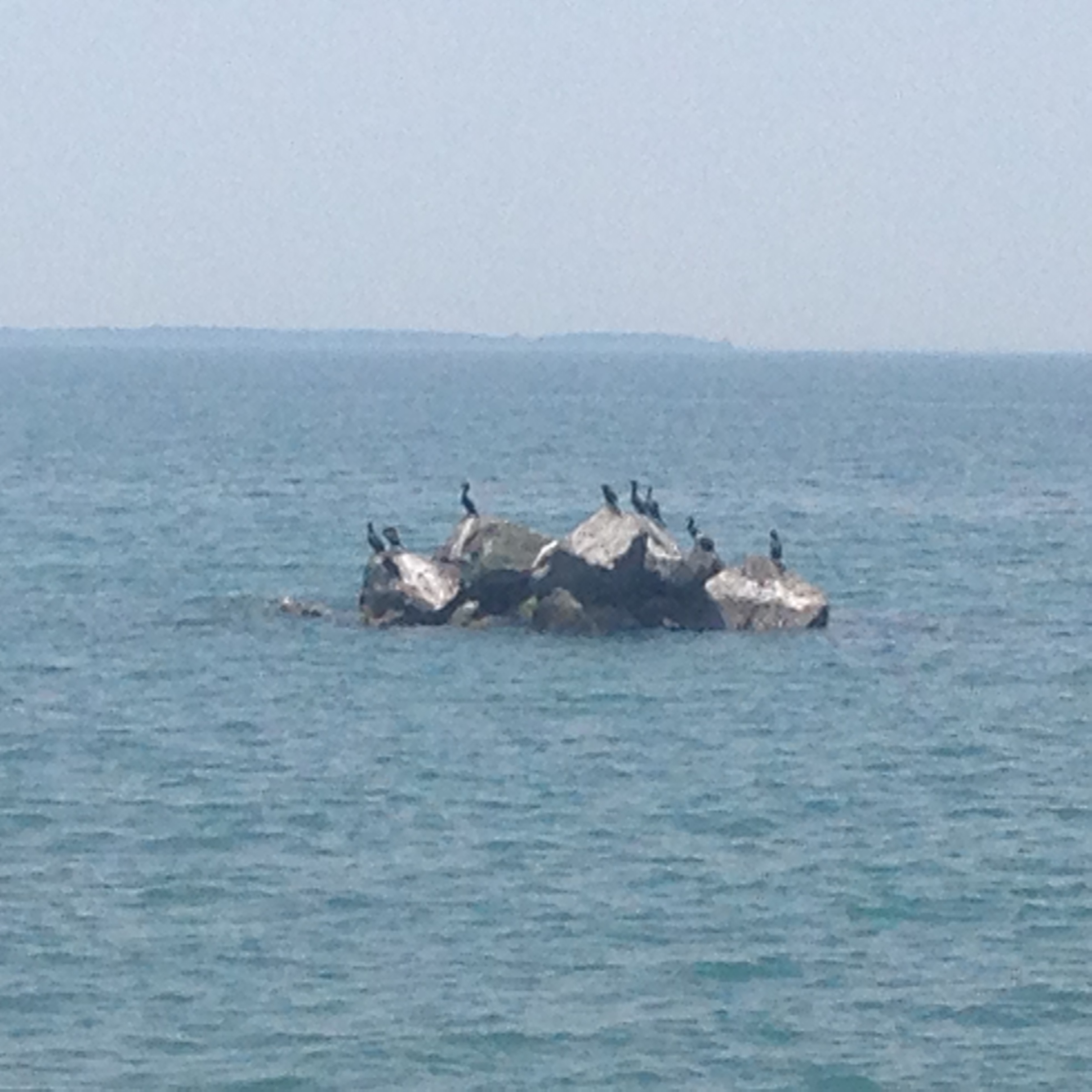
Double-crested Cormorants (Phalacrocorax auritus) sunning themselves on the “bass rocks” in Lake Erie, off the west shore of Pelee Island with two of the three American Bass Islands (Middle Bass Island and North Bass Island) in the background.
If you are lucky, however, you may be able hear the mayflies’ wings beating against the evening air when they dance in a swarm. Saturday night, they came off the trees, where they’d probably spent the day, to perform their nuptial dance above our beach fire as the sun was setting.

Lake, sunset, beachfire: ahhh, Pelee!
We couldn’t hear them over the snap of the fire and the lap of the water, but they were a quite a sight to behold!
Can you see them?
If you take a hard look, maybe squint a bit, you should be able to see evidence of the ephemeral dance of the mayfly in the twilight photo at the beginning of this post.






